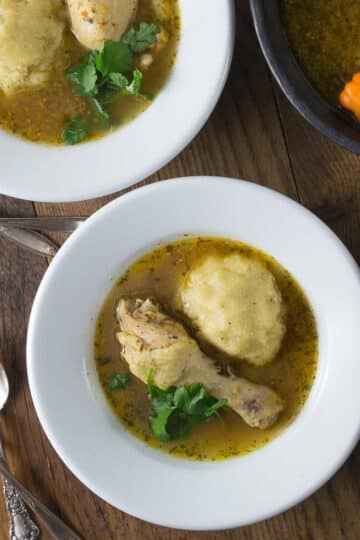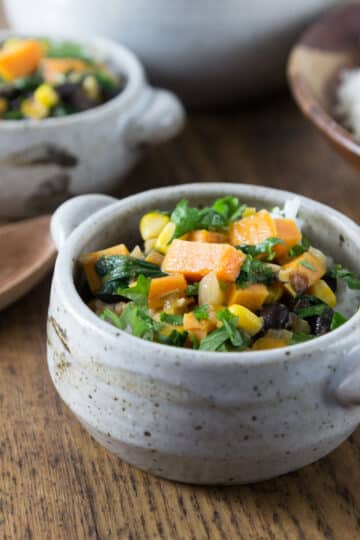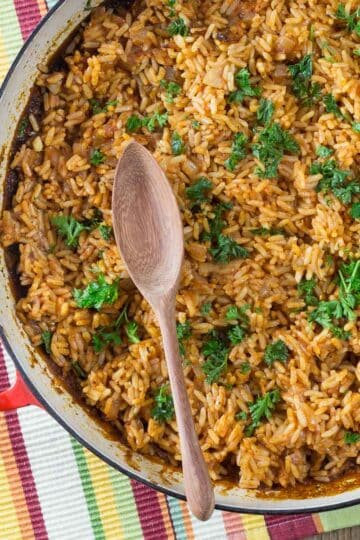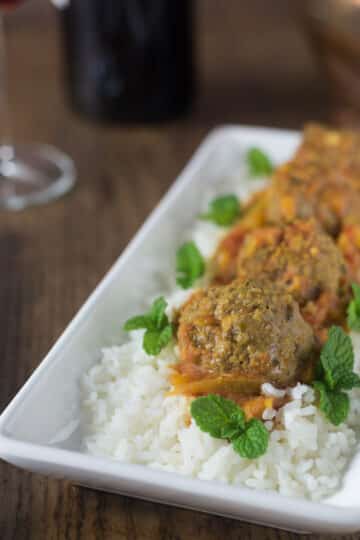Fly to Brazil and they're known as acaraje. For Ghanians, it's "akla" or "koose". In Cameroon and Nigeria, they're known as Akara or black eyed pea fritters. For consistency's sake, we'll be referring to this dish as Nigerian akara. Today, I'm teaching you how to make Akara with black eyed peas. In English, we refer to them as black eyed pea fritters. Akara is a popular breakfast meal vegetarian and vegan-friendly food from Africa.

What is Akara?
Making akara is very simplistic but also creates a yummy, crispy and crunchy end product. With very few key ingredients, it's easy to throw together. At its core is pureed black eyed peas, with pepper, onion, salt and pepper added to the blend. After it comes together in the blender or food processor and whipped, you're ready to fry up some akara! You can serve it with bread, stews, and more.
History of Akara
Akara originated in Nigeria, but made its way to many different countries in West Africa and all the way to Brazil. When enslaved West Africans were forced to leave their homelands, they brought this delicious recipe to Brazil with them. Over time, Brazilians started calling it acaraje. Brazilian acaraje is a popular dish in the country and is one of the more accessible Brazilian vegetarian meals.

How to make Akara
We start the recipe with soaking your dried black eyed peas for 1-2 hours so they moisten up and expand to their proper size. They'll soften and be easier to blend up if you soak them. If you don't have that much time, soak for as long as you can, but be wary that they may be hesitant to break apart in the food processor.
After the peas are soft and the skins loose rub them together to remove the skids. See the photos below on pouring off the skins that will float to the top. Once skinned blend them together with all the other ingredient into a batter, whip in your stand mixer to make them light and add some air. Heat your frying oil, then when the oil is hot, scoop the batter into a ball and drop into the oil. You'll fry them until golden brown and let them cool on a paper towel to absorb the oil. Voila, you have fried akara balls! It's really that easy, which is always a good thing in my book.
Ingredient Run-Down
You probably have the majority of ingredients in your pantry already. I always have a bag of onions on hand since I use them so often. The two ingredients you may not have on hand are habanero peppers and black eyed peas, the star ingredient of akara.
Like I mentioned, this akara recipe is simple with few ingredients, but you can make it more difficult with expectations of better texture depending on how much effort you want to put in. Black eyed peas are easy to find at grocery stores these days, but the traditional akara recipe recommends you purchase black eyed peas with the shells still on. Obviously, shelling the peas will be a tedious task, but I've heard it yields more crunch than pre-shelled peas.
Brazilian acaraje incorporates shrimp into the fritters. So if you want more flavor and protein, consider adding some shrimp to this akara recipe. You'll make the akara exactly as stated in the recipe, but you'll use the fritters as a sort of "bread" to hold together the filling of shrimp, chili powder, onion, and olive oil. Of course, note that if you choose to use shrimp, the vegetarian acaraje recipe wouldn't be vegetarian rather it would be pescetarian!
Step by step photos to make Akara

- Gather all your ingredients and have them ready to go.
- Soak the peas for at least 2 hours and keep them covered with water. You may need to add more water after they swell up so check them after a while and add more water if needed.
- Rub the peas together in the palms of your hands using a lot of force to break off the skins. Don't worry about breaking the peas into pieces.
- The skins will float so pour them off the top. Add more water and keep breaking the skins off. Repeat until all the skins have been removed.
- Drain all the water off and place the peas in a food processor. Pulse until the peas are broken down.
- Add the onion, habanero, water, pepper, salt to taste and any other flavors you want to add.
- Place the batter in the bowl of a stand mixer and whisk for 3-5 minutes until fluffy. Scooping with a standard ice cream scoop with give you about a ¼ cup portion for each.
- Drop into frying oil that has been heated to 350°F. Fry until golden brown on one side and then flip over. Serve hot.
Frequently Asked Questions
Once they have completely cooled you can store this in the refrigerator for up to 3 days. Place them in an airtight container or zip top bags.
Reheat in the oven at 250°F for 10 minutes until warm in the center. I like to put them in my Cosori Air Fryer for 5 minutes at 250°F.
Yes, you can freeze these for up to two months in an airtight container after they are completely cooled. Reheat in the oven at 250°F for 10-12 minutes or 10 minutes in an air fryer at 250°F until warm in the center.
If you are interested in exploring more recipes from this region I can suggest a few. African Pepper Chicken Soup with is a spicy hot dish with a dumpling like mashed yucca balls called fufu. Another spicy dish is West African Jollof Rice that brings the heat of habaneros. A more mild dish with tons of flavor is West African Peanut Stew which is a nice vegetarian dish.
Looking for more recipes? Sign up for my free recipe newsletter to get new recipes in your inbox each week! You can also find me sharing more inspiration in Pinterest and Facebook
📖 Recipe

Akara - West African Black Eyed Pea Fritters
Ingredients
- 2 cups black eyed peas
- 2 habanero peppers seeded and cored (substitute ¼ teaspoon cayenne pepper)
- 1 onion large, roughly chopped
- ½ teaspoon salt to taste
- ¼ teaspoon white pepper optional
- ¼ teaspoon garlic powder optional
- ¼ teaspoon smoked paprika optional
- ¾ cup water
- oil for frying
Instructions
Preparing the black eyed peas:
- Soak the peas for 1-2 hours in a large bowl and cover them with water, longer is better for a softer smoother batter.
- Rub the peas together in the palms of your hands with a good amount fo force to break up and remove this skins.
- The skins will float on the water and you can pour them off and add more water as you go. Repeat until all the skins have been removed from the peas.
Prepare the batter:
- Drain and rinse the peas then add to a food processor. Heat up the oil to 350°F while preparing the batter.
- Add the onion, habanero, salt, pepper and any optional flavors like garlic powder, smoked paprika etc to the food processor. Add just enough water bring the batter together.
- Blend until smooth then add to the bowl of a stand mixer.
- Whisk the batter on high until it is fluffy for 3-5 minutes.
Frying the Akara
- Drop ¼ cup scoops of the batter into the oil. A standard half sphere type ice cream scoops works well for this.
- Flip them and fry unit golden brown.






Leave a Reply